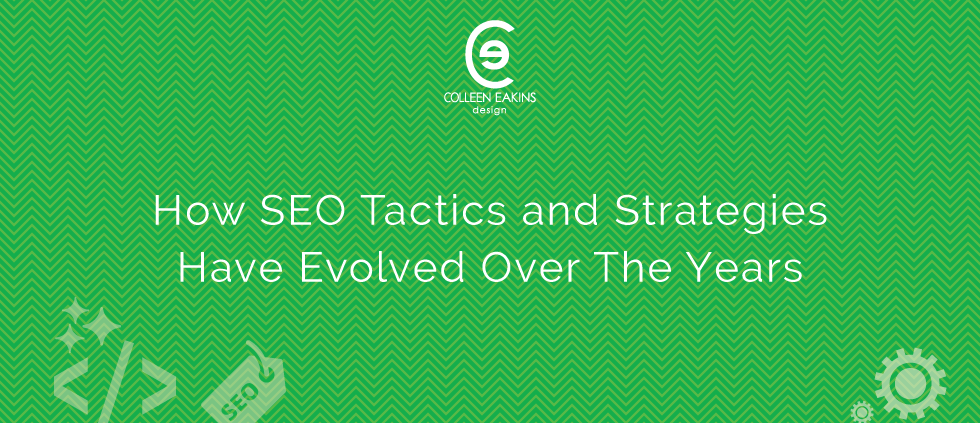How SEO Tactics and Strategies Have Evolved Over The Years
Any seasoned marketing professional understands the importance of implementing a fruitful and productive SEO strategy when working with their clients. In years past, having a properly optimized website played a significant role in the success of many online and offline businesses. The ultimate goal of SEO was to secure top listings in search engine rankings. Once these rankings got achieved, sales and conversions inevitably followed.
In the early days of SEO, updates to search engine results was done regularly, so website owners and Internet Marketers could see almost immediate returns from the SEO work they completed on the site.
At the time, Google – the Granddaddy of Search Engines – relied heavily on a “Page Rank” (or PR) system that delegated authority to websites or web pages based on a number of ranking factors. The higher the PR a site or web page had, the more domination it had in search results. A few well-placed links with optimized keywords in the anchor text from high PR pages or websites could be the difference between being on Page 10 or Page 1.
In the hyperactive environment of quick rankings, it was hard not to enjoy the benefits of nearly instant results for all SEO and marketing efforts. Search engine optimization was a potent way to influence search engine algorithms and get impressive results.
However, like all things in life, the only thing that remains constant is change. SEO has evolved over the years.
SEO’s Evolution
Widespread use of these tactics to manipulate search results was met with opposition from webspam teams. These webspam teams were tasked with identifying and closing the loopholes that webmasters and some marketing companies were using to manipulate the search results.
When search engines were still fresh and new on the Internet scene, it is true that it didn’t take a lot of effort to rank highly in their search results. A few minor changes here and there really could change your position in search. A little bit of “on-page” optimization combined with some “off-page” factors was often enough to gain traction in results.
Over time, the technology that powered the search engines improved and measures were put in place to slow the roll on savvy optimizers and SEO companies who discovered the loophole in their algorithm and took advantage where they could.
Keep in mind the impact of a Google algorithm update was significant because popular social media platforms weren’t a significant alternative at that time.
Updates occurred less frequently and when they did, an unfavorable algorithm or a penalty was like a hurricane hitting your business. With no easy fix, the SEO tactics that once proved fruitful in achieving the desired results were no longer the “one-two” punch to number one. Instead, these tactics were viewed as “toxic.”
SEO Companies and webmasters were then forced to try and undo all the original work done to rank highly in the first place. A “Link Disavow” tool was added to allow people to let the search engine know what links from ‘bad neighborhoods’ should be dropped from their profiles. Suddenly the golden currency of the Internet soured.
In worst case scenarios, entire sites were removed from the search index entirely. As you can imagine, this had a chilling effect on many companies who were taking shortcuts to get their client’s websites to rank highly. It is like the old fable about Icarus. He flew too close to the sun and had his wings burned off.
SEO Companies and independent webmasters who were winning on the old search paradigm were forced to rethink and regroup their strategies to remain competitive in online search.
In today’s day and age, search engine optimization is still important and social media plays a larger role in rankings. Social media platforms with SEO, are part of a broader marketing strategy that reaches into social circles, search, AMP friendly pages, and third-party sites. These broaden your overall audience.
Instead of relying merely on links to judge the worthiness of a website, other technical factors including site speed, TLS security, having established conversion goals, social signals, and other credible references are more likely to help build the trust you need to rank in your desired keyword division. References, including links, from related sites such as Yelp, the Better Business Bureau, and your Local Chamber of Commerce are more meaningful than 1,000 links from unrelated sites.
Social Signals is another influential factor, so you’ll want to be confident that your business is making regular updates to your Facebook and LinkedIn pages to make sure that you’re connecting with your audience on these platforms. Your social channels support your primary website, so you can always use these channels to share relevant content, to make offers, and to build a strong, loyal fan base. Additionally, recent changes to these growing platforms have made them more business-friendly. Which is excellent news for Small and Medium-sized businesses with a favorable profile.
Another factor to consider is the impact that mobile users have made on the Internet. For the first time in history, the number of people using mobile devices (smartphones, tablets. etc.) surpassed the number of people using desktops to access the Internet. If you don’t have a mobile-friendly website, you are substantially reducing your chances of coming up in any search queries generated from mobile phones.
In SEO and Internet Marketing, you have to stay abreast of changes so you can adapt to them quickly. You have to stay nimble so that when a good opportunity presents itself, you’re able to take advantage of the situation. That’s why it is always a brilliant idea to work with a marketing professional who is ‘in the know’ about the trends and strategies that are needed to excel online.
If you’d like to learn how we can help you optimize your site for better results, all you need to do is contact us to begin the conversation!

I’m a Digital Marketer & Freelance Writer with a penchant for all things forward-thinking and positive. I’m a fan of abundance and progress.




